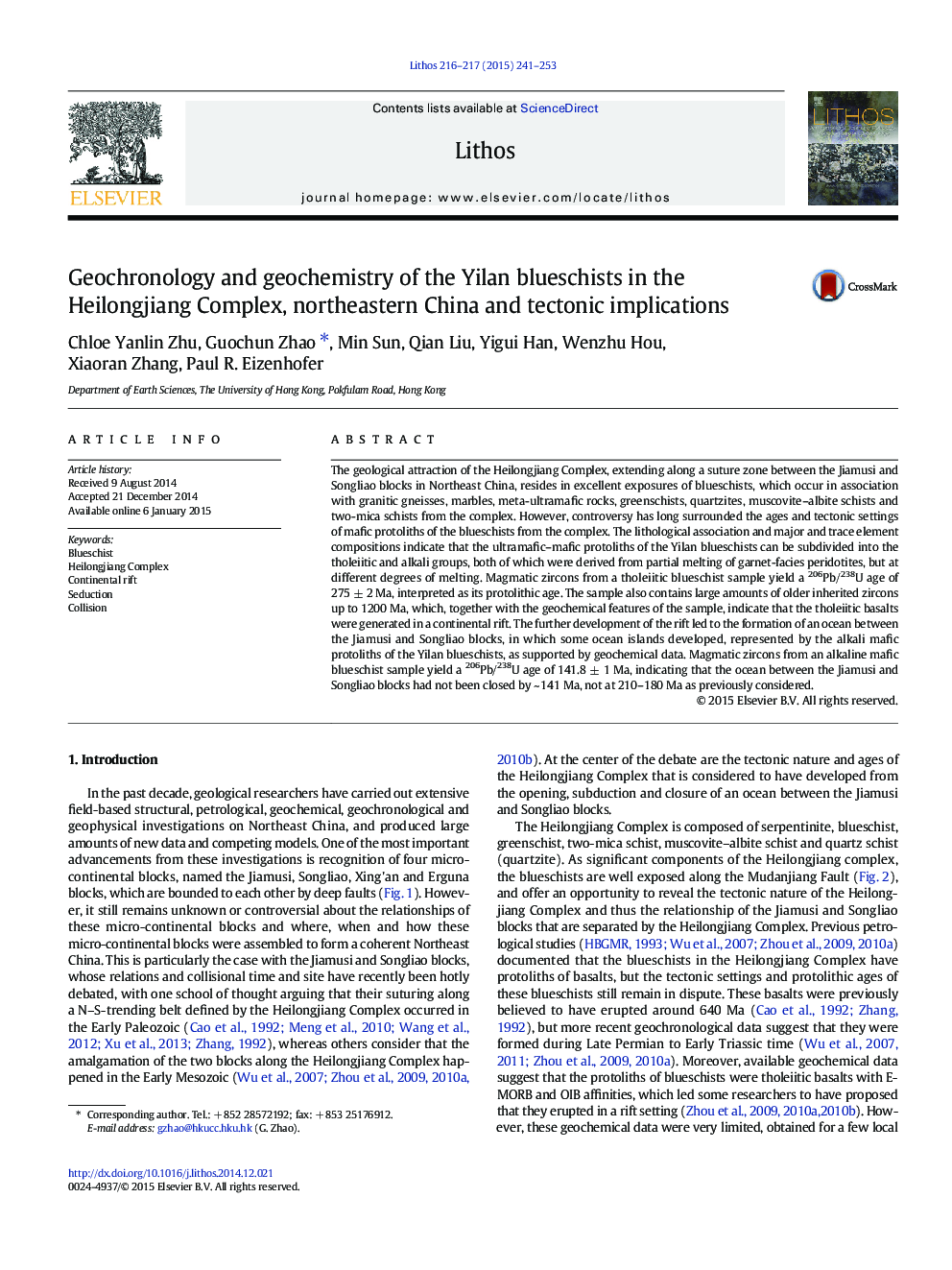| کد مقاله | کد نشریه | سال انتشار | مقاله انگلیسی | نسخه تمام متن |
|---|---|---|---|---|
| 6440774 | 1638668 | 2015 | 13 صفحه PDF | دانلود رایگان |
عنوان انگلیسی مقاله ISI
Geochronology and geochemistry of the Yilan blueschists in the Heilongjiang Complex, northeastern China and tectonic implications
دانلود مقاله + سفارش ترجمه
دانلود مقاله ISI انگلیسی
رایگان برای ایرانیان
کلمات کلیدی
موضوعات مرتبط
مهندسی و علوم پایه
علوم زمین و سیارات
ژئوشیمی و پترولوژی
پیش نمایش صفحه اول مقاله

چکیده انگلیسی
The geological attraction of the Heilongjiang Complex, extending along a suture zone between the Jiamusi and Songliao blocks in Northeast China, resides in excellent exposures of blueschists, which occur in association with granitic gneisses, marbles, meta-ultramafic rocks, greenschists, quartzites, muscovite-albite schists and two-mica schists from the complex. However, controversy has long surrounded the ages and tectonic settings of mafic protoliths of the blueschists from the complex. The lithological association and major and trace element compositions indicate that the ultramafic-mafic protoliths of the Yilan blueschists can be subdivided into the tholeiitic and alkali groups, both of which were derived from partial melting of garnet-facies peridotites, but at different degrees of melting. Magmatic zircons from a tholeiitic blueschist sample yield a 206Pb/238U age of 275 ± 2 Ma, interpreted as its protolithic age. The sample also contains large amounts of older inherited zircons up to 1200 Ma, which, together with the geochemical features of the sample, indicate that the tholeiitic basalts were generated in a continental rift. The further development of the rift led to the formation of an ocean between the Jiamusi and Songliao blocks, in which some ocean islands developed, represented by the alkali mafic protoliths of the Yilan blueschists, as supported by geochemical data. Magmatic zircons from an alkaline mafic blueschist sample yield a 206Pb/238U age of 141.8 ± 1 Ma, indicating that the ocean between the Jiamusi and Songliao blocks had not been closed by ~ 141 Ma, not at 210-180 Ma as previously considered.
ناشر
Database: Elsevier - ScienceDirect (ساینس دایرکت)
Journal: Lithos - Volumes 216â217, February 2015, Pages 241-253
Journal: Lithos - Volumes 216â217, February 2015, Pages 241-253
نویسندگان
Chloe Yanlin Zhu, Guochun Zhao, Min Sun, Qian Liu, Yigui Han, Wenzhu Hou, Xiaoran Zhang, Paul R. Eizenhofer,